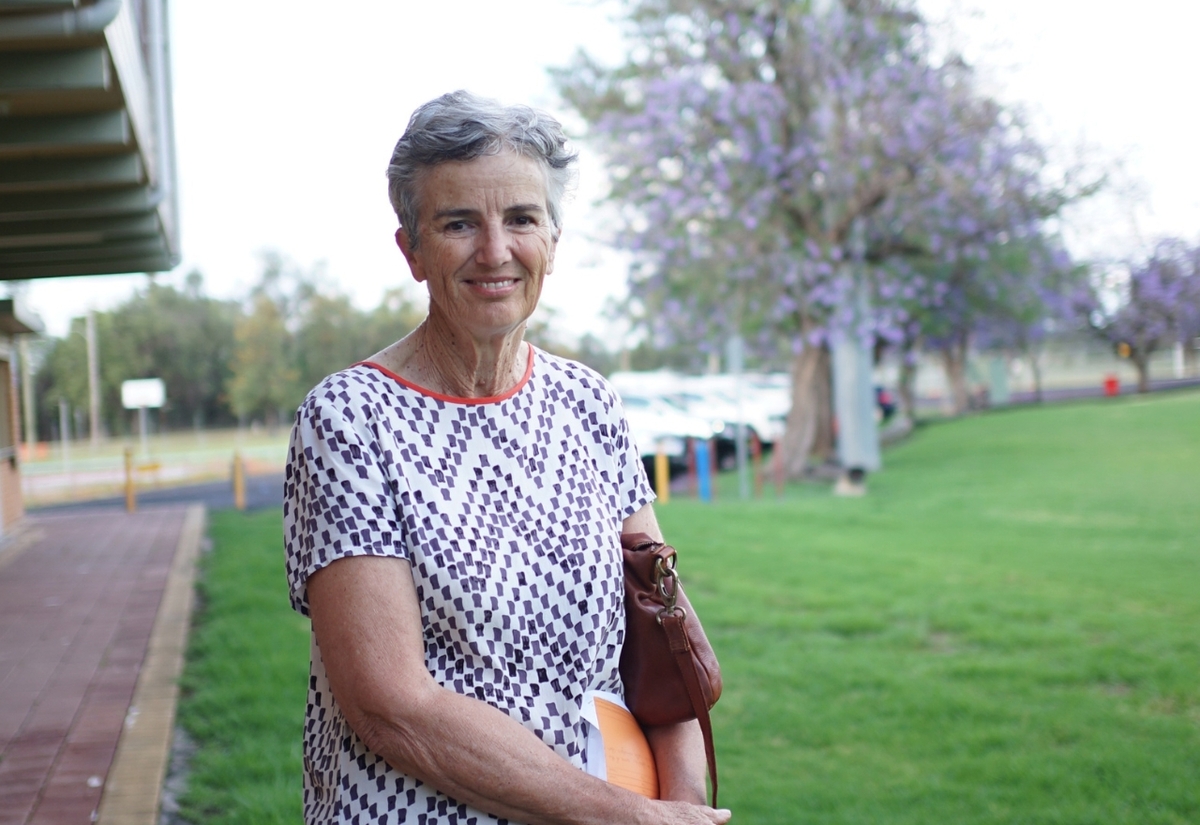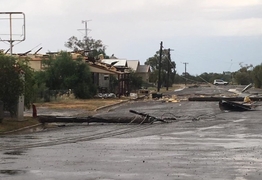Gov officials talk water security in Warren and Carinda
River McCrossen
20 November 2024, 2:40 AM
 River Smart Australia chair Kate Mildner attended a workshop in Warren on water security. IMAGE: Western Plains App/ River McCrossen
River Smart Australia chair Kate Mildner attended a workshop in Warren on water security. IMAGE: Western Plains App/ River McCrossen Council leaders, landholders and agricultural representatives had mixed views last week on a string of government project ideas to boost water security in the Macquarie Valley.
Officials from the Water Group of the NSW Department of Climate Change, Energy, the Environment and Water's (DCCEEW) Water Group met stakeholders in Warren, Carinda and Dubbo for public consultations pooling thoughts on project options to sandbag the region against drought.
Known as the Macquarie-Wambuul Water Security Project, the ideas cover from the Burrendong Dam near Wellington to the Macquarie Marshes.
Ideas brought to stakeholders include a water pipeline supplying Nyngan and Cobar from Dubbo, raising the Burrendong Dam level by ten per cent and a new weir between Warren and Narromine to replace the one at Gin Gin.
"We're looking at water security as a whole. Water security for residents, stock and domestic, environmental use- that's included in what we're considering. What we're looking at is trying to get the best solution for the valley," said Phillipa Fague, Director of Program Development and Management at the Water Group.
"We are really keen to get out into the community and speak to people with a diverse range of backgrounds and viewpoints."

The Macquarie River catchment. IMAGE: Wikimedia
Warren was hit hard by the Tinderbox Drought which ran between 2017 and 2019 and triggered concern that the local hospital would have to evacuate due to lack of water for firefighting.
At the Warren Sporting and Cultural Centre, up to 10 stakeholders watched a presentation by project manager Angus MacDonald on Wednesday 13 November, which showed that by 2070 the probability of another Tinderbox, or worse, will jump from one in 1000 years to one in 30.
That is why former local mayor Milton Quigley, who was at the meeting, said he supports raising the wall of the Burrendong Dam to store more flood water for dry times.
The dam releases into the Macquarie River, which flows up through Narromine, Warren and Carinda before flowing into the Barwon River between Brewarrina and Walgett.
"Let's use some water when it's really little use, and convert it into water of great use during a drought," Mr Quigley said.
Some Macquarie Marshes graziers who went to the Carinda meeting on 14 November, were less keen on raising the dam.
"That's going to mean that there's less dam spills, and dam spills are what wets the Marshes and creates a healthy environment down there," northern Marshes sheep and cattle grazier Robert McLellan said.

Farmer Andrew McGrath, former Warren mayor Milton Quigley, David Duncan and Warren Shire Council General Manager Gary Woodman at the Warren meeting. IMAGE: Tess Van Lubeck/ Warren Star
Graziers at the Carinda meeting also dismissed the other project ideas, which they said will not improve connections between the Macquarie River and the Barwon River.
On the Dubbo-Nyngan pipeline, Macquarie River grazier and chair of non-profit River Smart Australia, Kate Mildner, said the project would be "very expensive."
The town draws water from a weir in the Bogan River and the Macquarie River via the Albert Priest Channel, which also made her question why a pipeline would be needed.
"It seems extraordinary that the Macquarie has to supply a town that is on its own river," Ms Mildner said.
"Is there other ways that they could guarantee water supply?
"Nyngan is an important town. It needs its water in a drought to supply its own community, so is it possible to use groundwater? Is it possible, seeing big, high flows in the Bogan, that they have some methods of storage?"
A DCCEEW spokesperson said "robust analysis" of the Bogan found the river does not produce reliable flows during drought, which makes it "far less viable option for water transfer."
The spokesperson said Dubbo has access a larger and more secure water supply, and the water is already set aside in Burrendong Dam for Nyngan and Cobar.
Better marketing required - attendees
Stakeholders in Warren said they were given fair chance to have their say, although attendees at both meetings also said the gatherings could have been better publicised.
The spokesperson said they were advertised in media outlets in locations where consultations were held, including the Warren Star and Walgett Spectator.
Feedback from the consultations will be considered for the department's $9.35 million final business case, which will shortlist the most viable options and be delivered in late 2025-early 2026.
The Australian and NSW governments split the cost 50-50, which goes towards technical studies, environmental and cultural heritage assessments, consultation and the writing of the business case.
Whichever party takes government at the federal election next year will decide whether to fund a project.



